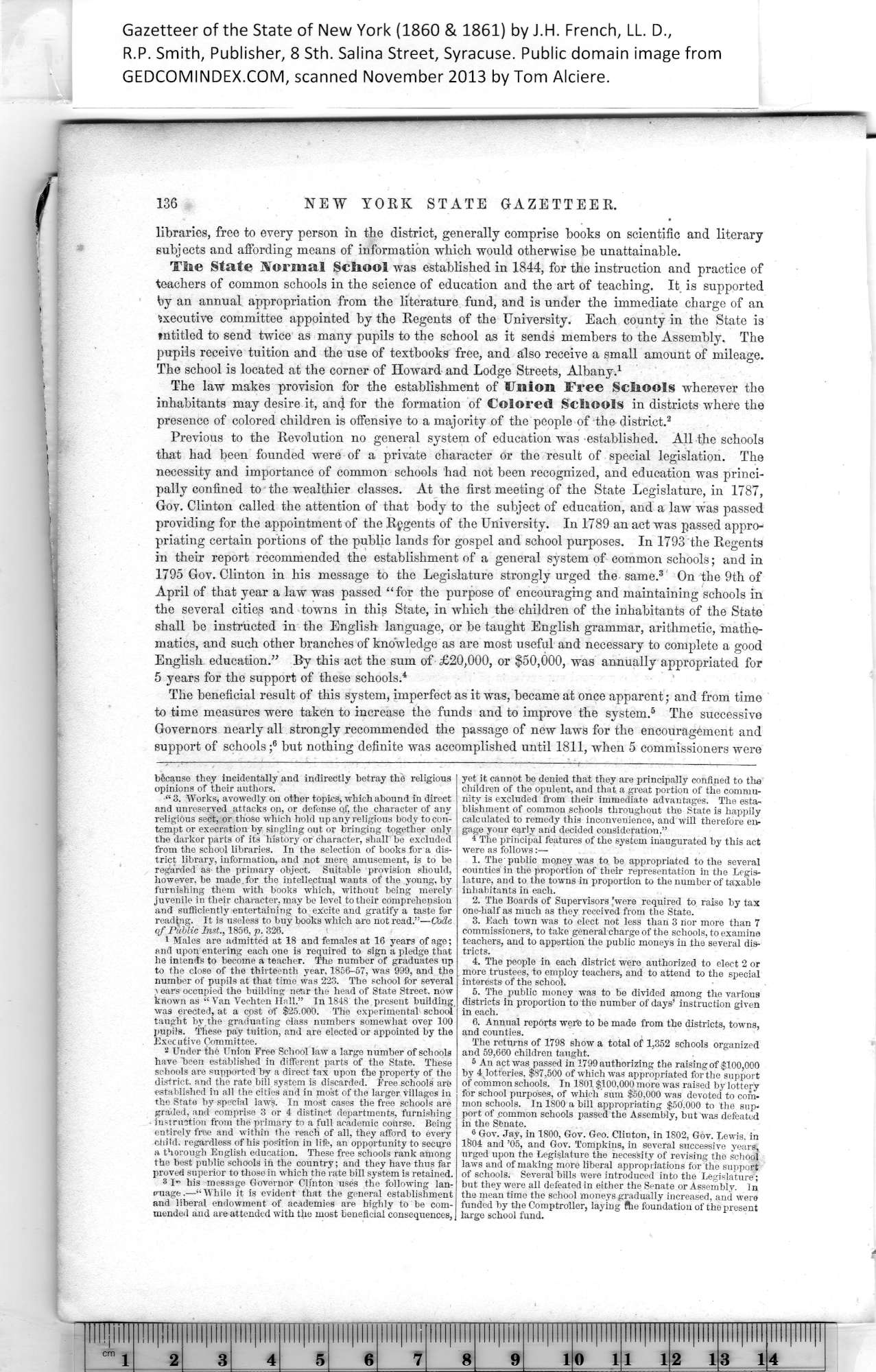|
because they incidentally and indirectly betray the religious
opinions of their authors.
“ 3. Works, avowedly on other topics, which abound in direct
and unreserved attacks on, or defense of, the character of any
religious sect, or those which hold up any religious body to con¬
tempt or execration by singling out or bringing together only
the darker parts of its history or character, shall be excluded
from the school libraries. In the selection of books for a dis¬
trict library, information, and not mere amusement, is to be
regarded as the primary object. Suitable provision should,
however, be made, for the intellectual wants of the young, by
furnishing them with books which, without being merely
juvenile in their character, may be level to their comprehension
and sufficiently entertaining to excite and gratify a taste for
reading. It is useless to buy books which are not read.”—Code
of Public Inst., 1856, p. 326.
i Males are admitted at 18 and females at 16 years of age;
and upon entering each one is required to sign a pledge that
he intends to become a teacher. The number of graduates up
to the close of the thirteenth year, 1856-57, was 999, and the
number of pupils at that time was 223. The school for several
> ears occupied the building near the head of State Street, now
known as “Van Veehten Hall.” In 1818 the present building
was erected, at a cost of $25,000. The experimental school
taught by.the graduating class numbers somewhat over 100
pupils. These pay tuition, and are elected or appointed by the
Executive Committee.
s Under thb Union Free School law a large number of schools
have been established in different parts of the State. These
schools are supported by a direct tax upon the property of the
district, and the rate hill system is discarded. Free schools are
established in ail the cities and in most of the larger villages in
the State by special laws. In most cases the free schools are
graded, and comprise 3 or 4 distinct departments, furnishing
instruction from the primary to a full academic course. Being
entirely free and within the reach of all, they afford to every
child, regardless of his position in life, an opportunity to secure
a thorough English education. These free schools rank among
the best public schools in the country; and they have thus far
proved superior to those in which the rate bill system is retained. |
3 I- his message Governor Clinton uses the following lan¬
guage.—“While it is evident that the general establishment
and liberal endowment of academies are highly to be com¬
mended and are attended with the most beneflcial consequences,
yet it cannot be denied that they are principally confined to the
children of the opulent, and that a great portion of the commu¬
nity is excluded fi-om their immediate advantages. The esta¬
blishment of common schools throughout the State is happily
calculated to remedy this inconvenience, and will therefore en¬
gage your early and decided consideration.”
4 The principal features of the system inaugurated by this act
were as follows:—
1. The public money was to be appropriated to the several
counties in the proportion of their representation in the Legis¬
lature, and to the towns in proportion to the number of taxable
inhabitants in each.
2. The Boards of Supervisors Jwere required to raise by tax
one-half as much as they received from the State.
3. Each town was to elect not less than 3 nor more than 7
commissioners, to take general charge of the schools, to examine
teachers, and to apportion the public moneys in the several dis¬
tricts.
4. The people in each district were authorized to elect 2 or
more trustees, to employ teachers, and to attend to the special
interests of the school.
5. The public money was to be divided among the various
districts in proportion to the number of days’ instruction given
in each.
6. Annual reports were to be made from the districts, towns,
and counties.
The returns of 1798 show a total of 1,352 schools organized
and 59,660 children taught.
6 An act was passed in 1799 authorizing the raising of $100,000
by 4 lotteries, $87,500 of which was appropriated for the support
of common schools. In 1801 $100,000 more was raised by lottery
for school purposes, of which sum $50,000 was devoted to com¬
mon schools. In 1800 a bill appropriating $50,000 to the sup¬
port of common schools passed the Assembly, but was defeated
in the Senate.
6 Gov. Jay, in 1800, Gov. Geo. Clinton, in 1802, Gov. Lewis, in
1804 and ’05, and Gov. Tompkins, in several successive years,
urged upon the Legislature the necessity of revising the school
laws and of making more liberal appropr iations for the support
of schools. Several bills were introduced into the Legislature;
but they were all defeated in either the Senate or Assembly. In
the mean time the school moneys gradually increased, and were
funded by the Comptroller, laying ftie foundation of the present
large school fund. |
